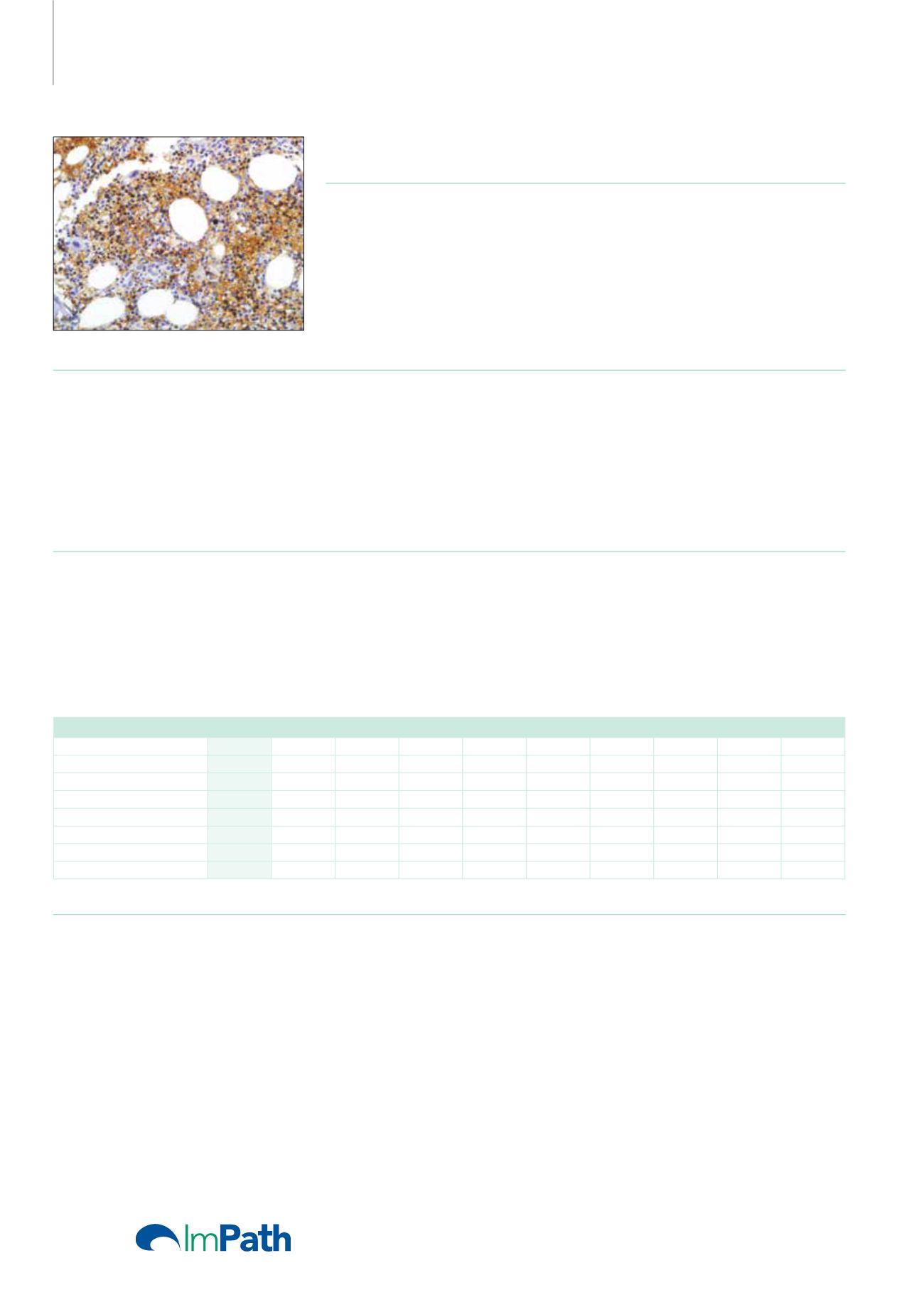
Antibodies for
Immunohistochemistry
Spectrin (RBC2/3D5)
Mouse Monoclonal Antibody
Cat. No. Description
Volume
44390 Spectrin RTU M (RBC2/3D5)
7 ml Ready To Use
44799 Spectrin 0,1 M (RBC2/3D5)
100 µl liquid Concentrated
44800 Spectrin 1 M (RBC2/3D5)
1 ml liquid Concentrated
Product Specifications
Designation
IVD
Reactivity
Paraffin
Visualization
Membranous
Control
Bone Marrow
Stability
Up to 36 mo. at 2-8°C
Isotype
IgG
1
/k
Manual Protocol*
• Pretreatment: Heat Induced Epitope
Retrieval (HIER)
• Primary Antibody Incubation Time:
10-30min @ 25-37°C
• 2-step polymer detection
*Please refer to product insert for complete protocol.
Product Description
Spectrin is an actin-crosslinking and molecular scaffold protein that links the plasma membrane to the actin cytoskeleton and functions in the
determination of cell shape, arrangement of transmembrane proteins, and organization of organelles. It is a tetramer made up of alpha-beta
dimers linked in a head-to-head arrangement. The gene is one member of a family of alpha-spectrin genes. The encoded protein is primarily
composed of 22 spectrin repeats which are involved in dimer formation. It forms weaker tetramer interactions than non-erythrocytic alpha
spectrin, which may increase the plasma membrane elasticity and deformability of red blood cells. Mutations in the gene result in a variety of
hereditary red blood cell disorders, including elliptocytosis type 2, pyropoikilocytosis, and spherocytic hemolytic anemia.
Anti-spectrin is useful in the diagnosis of erythroid leukemias.
Acute Myeloid Leukemia
Spectrin MPO CD68 Factor VIII
CD61 BOB.1 Oct-2
CD34
CD43 Lysozyme
Acute Myeloid, M0
-
-
-
-
-
-
-
+
+
+
Acute Myeloid, M1&2
-
+
+
-
-
-
+
+
Promyelocytic, M3
-
+
-
-
-
+
+
-
+
-
Myelomonocytic, M4
-
+
+
-
-
-
+
+
+
+
Monoblastic, M5
-
+
+
-
-
-
+
-/+
+
+
Acute Erythroid, M6
+
+
-
-
-
-
-
-/+
Megakaryoblastic, M7
-
-
-
+
+
+/-
-
-
Reference
1. Sadahira Y, et al. J Clin Pathol. 1999 Dec; 52(12):919-21.
2. Nehls V, et al. Am J Pathol. 1993 May; 142(5):1565-73.
3. Muller M, et al. J Vet Med A Physiol Pathol Clin Med. 2001 Feb; 48(1):51-7.
4. Terada N, et al. J Anat. 1997 Apr; 190(Pt 3):397-404.
220


